
Tradescantia is a genus of 85 species of herbaceous perennial wildflowers in the family Commelinaceae, native to the Americas from southern Canada to northern Argentina, including the West Indies. Members of the genus are known by many common names, including inchplant, wandering jew, spiderwort, dayflower and trad.

Alcea is a genus of over 80 species of flowering plants in the mallow family Malvaceae, commonly known as the hollyhocks. They are native to Asia and Europe. The single species of hollyhock from the Americas, the streambank wild hollyhock, belongs to a different genus.

Oenothera biennis, the common evening-primrose, is a species of flowering plant in the family Onagraceae, native to eastern and central North America, from Newfoundland west to Alberta, southeast to Florida, and southwest to Texas, and widely naturalized elsewhere in temperate and subtropical regions. Evening primrose oil is produced from the plant.

Prosopis pallida is a species of mesquite tree. It has the common names kiawe, huarango and American carob, as well as "bayahonda", "algarrobo pálido", and "algarrobo blanco". It is a thorny legume, native to Colombia, Ecuador and Peru, particularly drier areas near the coast. While threatened in its native habitat, it is considered an invasive species in many other places.

Alcea rosea, the common hollyhock, is an ornamental dicot flowering plant in the family Malvaceae. It was imported into Europe from southwestern China during, or possibly before, the 15th century. William Turner, a herbalist of the time, gave it the name "holyoke" from which the English name derives.
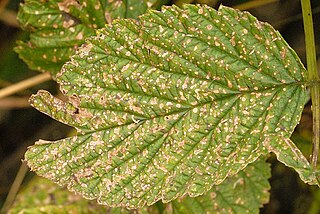
Elsinoë Veneta is a plant pathogen, the causal agent of the anthracnose of raspberry.
Phaeochoropsis mucosa is a plant pathogen infecting coconut trees. It causes lesions that are scattered over the tree leaves, although the necrosis is minimal.
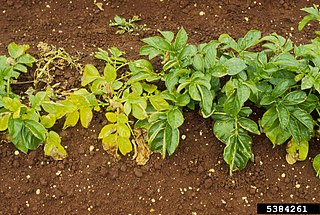
Globodera pallida is a species of nematode in the family Heteroderidae. It is well known as a plant pathogen, especially of potatoes. It is "one of the most economically important plant parasitic nematodes," causing major crop losses, and is a model organism used to study the biology of cyst nematodes. Its common names include potato cyst nematode, white potato cyst nematode, pale potato cyst nematode, potato root eelworm, golden nematode, and pale cyst nematode.

Malva alcea is a plant in the mallow family native to southwestern, central and eastern Europe and southwestern Asia, from Spain north to southern Sweden and east to Russia and Turkey.

Artemisia biennis is a species of sagebrush known by the common name biennial wormwood. It is a common and widely distributed weed, so well established in many places that its region of origin is difficult to ascertain. This species is most likely native to northwestern North America and naturalized in Western Europe, and eastern and southern North America.
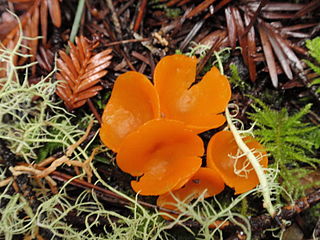
Sowerbyella is a genus of fungi in the family Pyronemataceae. The genus has a widespread distribution, and contains 17 species found mostly in Europe and China.

Aceria guerreronis, the coconut mite, is an eriophyid mite which infests coconut plantations. It is economically devastating, and can destroy up to 60% of coconut production. The immature nuts are infested and injured by mites feeding in the portion covered by the perianth of the immature nut.
CAB Direct is a source of references for the applied life sciences It incorporates two bibliographic databases: CAB Abstracts and Global Health. CAB Direct is an access point for multiple bibliographic databases produced by CABI. This database contains over 11 million bibliographic records, which includes 746,000 full text articles. It also includes noteworthy literature reviews. News articles and reports are also part of this combined database. CAB Direct has now migrated to CABI's new platform CABI Digital Library - the new home of CABI's research content.
The Invasive Species Compendium (ISC) is an online, open access reference work covering recognition, biology, distribution, impact, and management of invasive plants and animals produced by CAB International alongside an international consortium. It comprises peer-reviewed datasheets, images, and maps, a bibliographic database, and full text articles. New datasheets, data sets, and scientific literature are added on a weekly basis. The ISC has been resourced by a diverse international consortium of government departments, non-governmental organizations, and private companies.
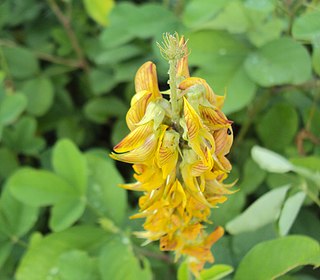
Crotalaria pallida, commonly known as the smooth crotalaria, is a species of flowering plant within the family Fabaceae.
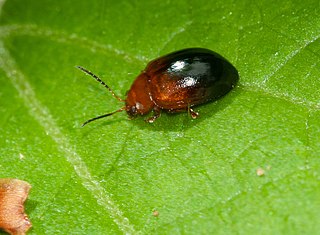
Nisotra is a genus of flea beetles in the family Chrysomelidae. They are found in Africa, Asia, and Australia. There are around 90 described species in Nisotra, including about 70 in Sub-Saharan Africa and Madagascar. Many of these species are agricultural pests.

Alcea digitata, the fingered hollyhock, is a tall hollyhock with large flowers native to the Middle East.
Alcea heldreichii is a hollyhock plant native to southwestern Europe and Turkey.
Alcea apterocarpa is a tall hollyhock plant native to Lebanon, Syria, Palestine, the Sinai, and Turkey.














